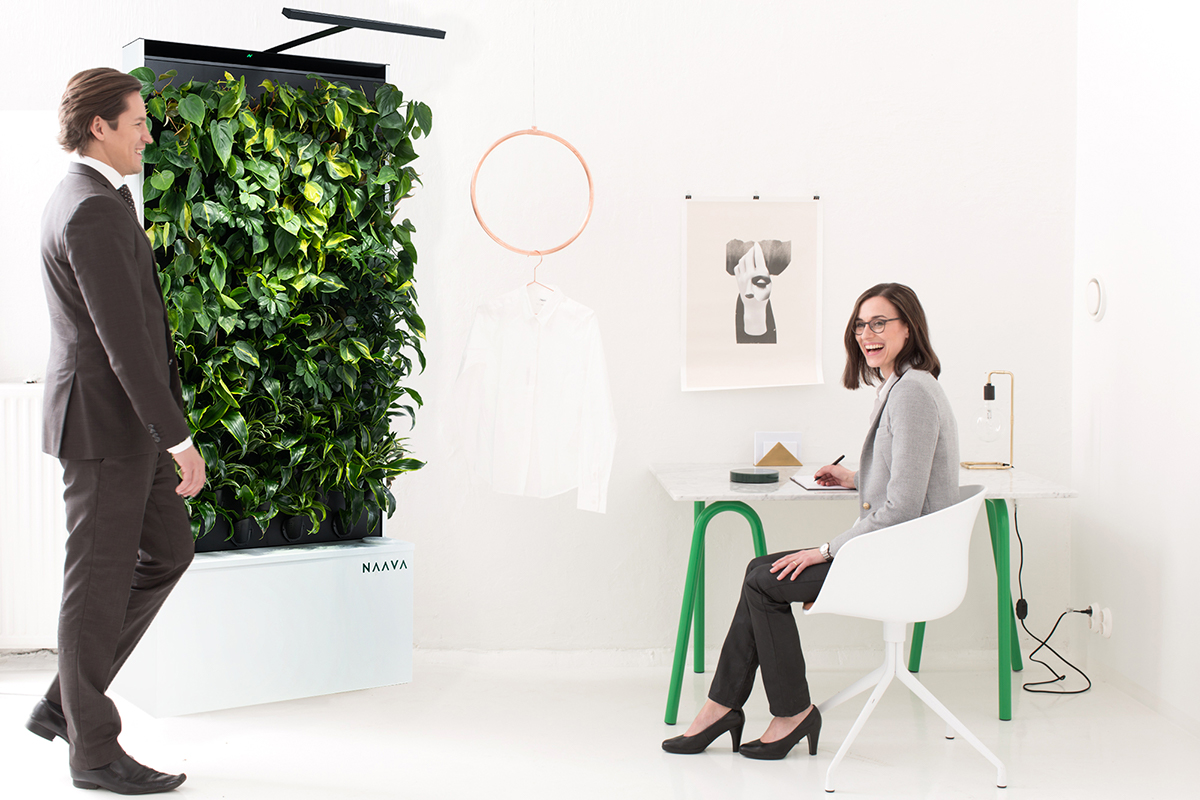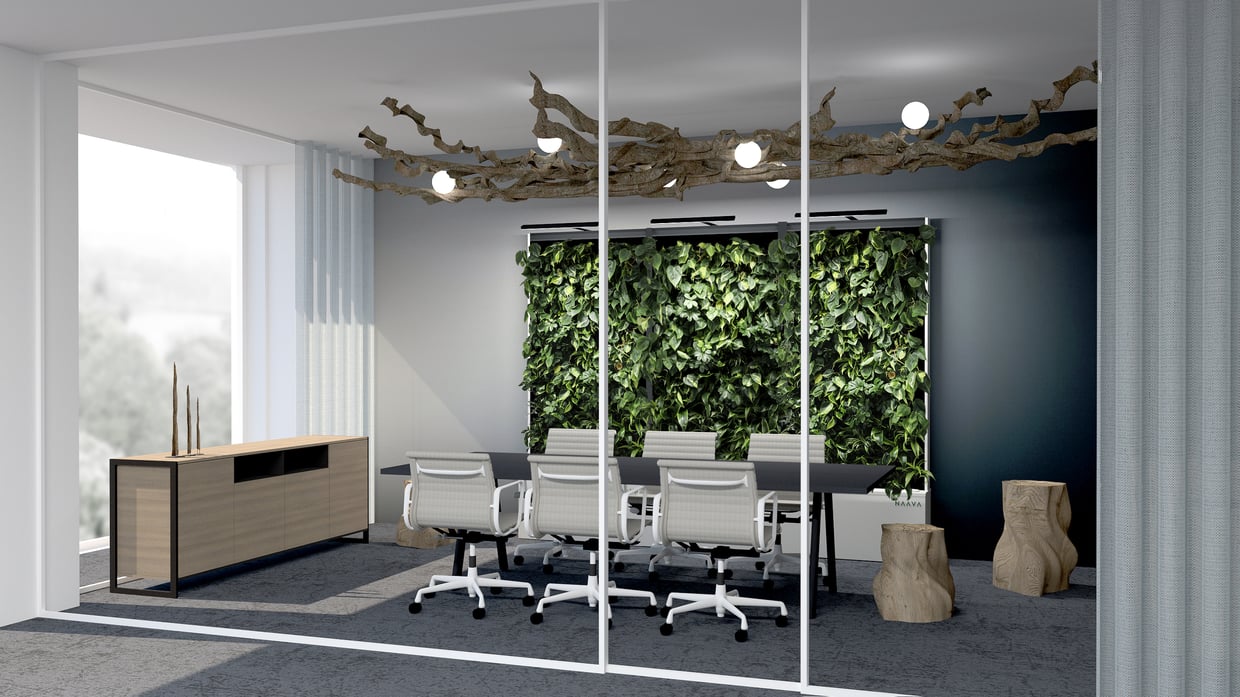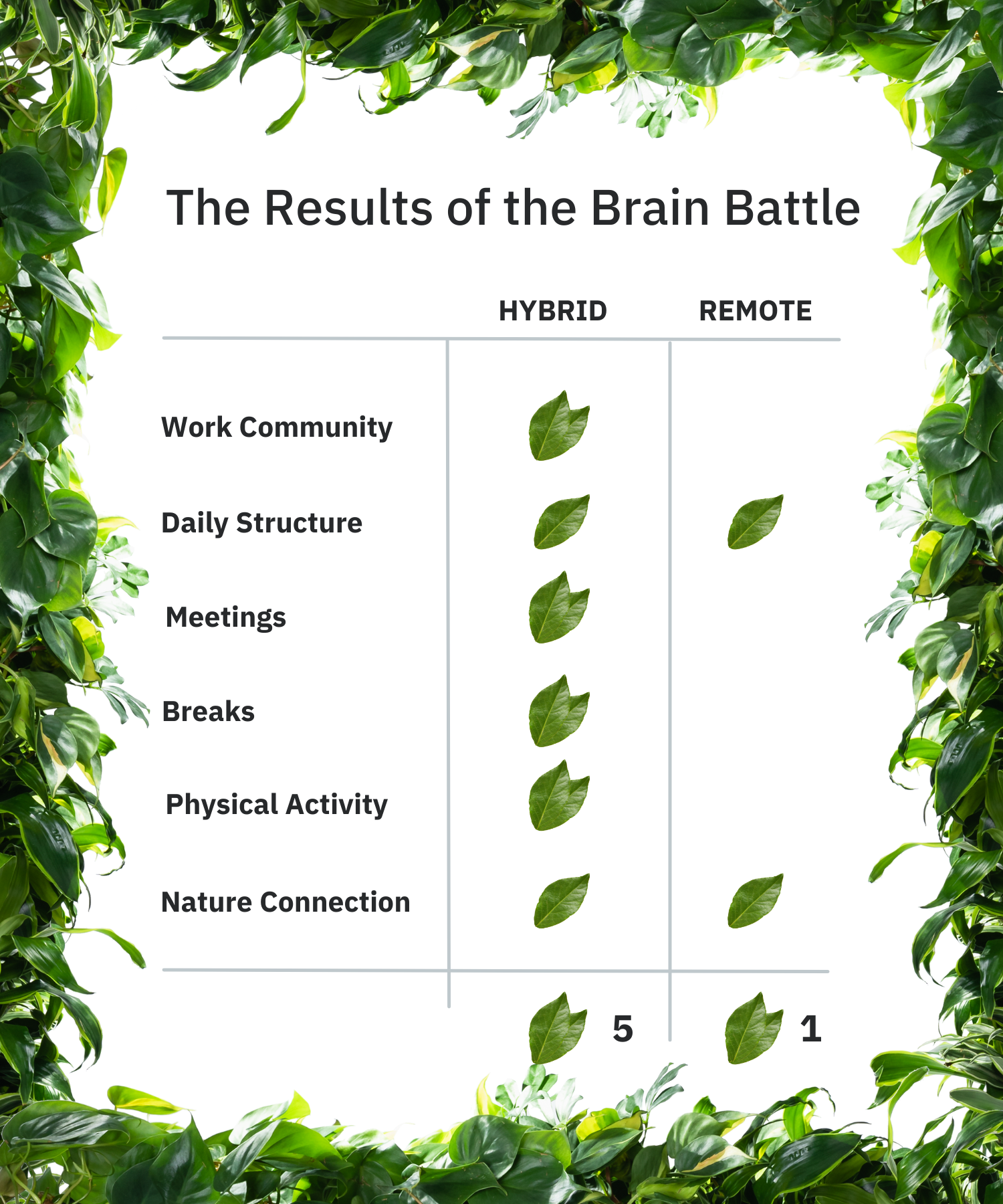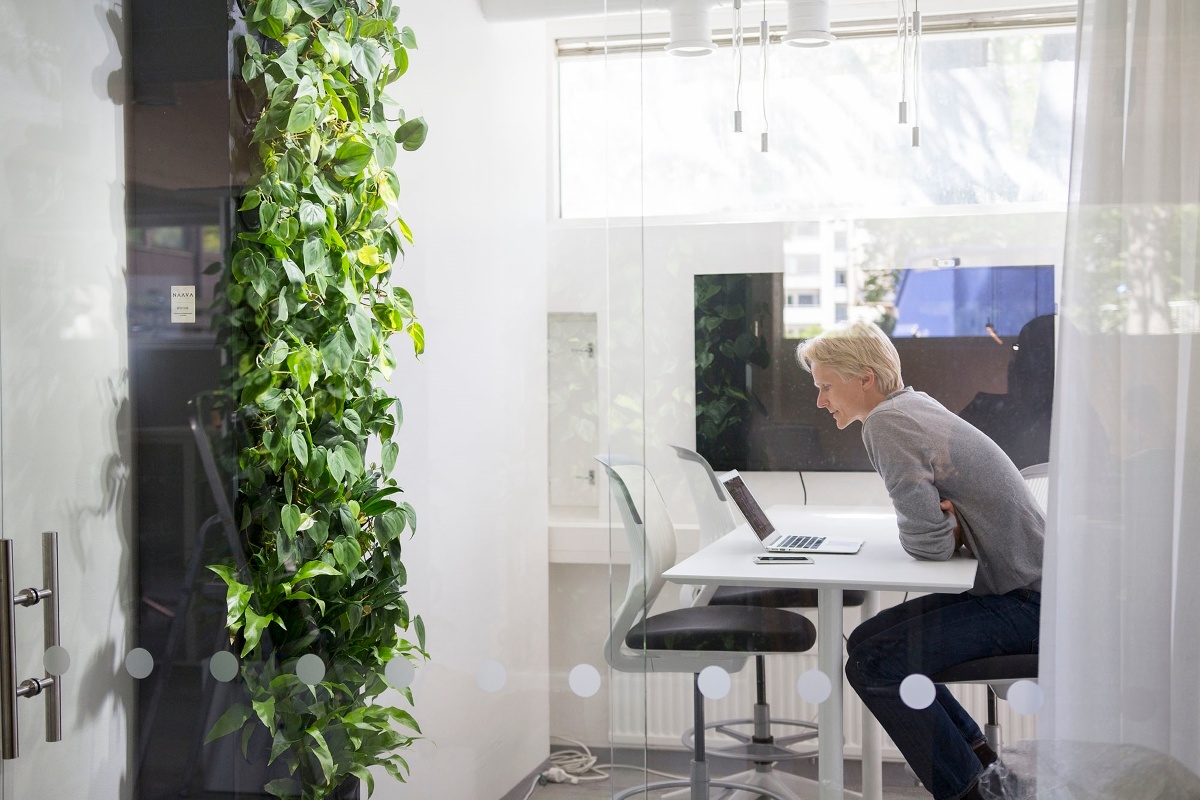Editorial Posted by Naava on March 7, 2022
Remote Work vs. Hybrid Work: Which Does Your Brain Prefer?
How is modern working life affecting our brain health?
The COVID-19 pandemic has increased the shift to more flexible and versatile work arrangements. Today, on-site work is no longer the primary work method with remote and hybrid work arrangements becoming more and more common in workplaces around the world. However, with our modern work environments evolving faster than Pokémon, there is one central question that needs to be asked:
How are these different ways of working affecting us humans in terms of brain health and well-being?
In this article, we are going to inspect the characteristics of both remote and hybrid work arrangements to discover how they affect our brain. Will there be a winner? You are about to find out.
Remote Work vs. Hybrid Work:
The Ultimate Brain Battle

Being Part of Your Work Community
Research suggests that humans have a natural tendency to seek belonging in groups. These groups can consist of work colleagues, family members, or people you meet at hobbies or in online environments. Being excluded from or not belonging to any group can have negative consequences such as experiences of loneliness, isolation, and depression.
As a matter of fact, a recent study discovered that acute isolation causes social cravings in the same section of our brain where fasting causes food cravings. Additionally, another study revealed that social exclusion is experienced in the same region of the brain where also physical pain is experienced, suggesting that social and physical pain share common physiological mechanisms.
It is inevitable that working from home at least to some extent will affect the amount of connection employees have with their work community. According to a survey conducted by OnePoll on behalf of Volley, seven in 10 employees who work from home are feeling more isolated since switching to working from home. Additionally, 63 percent said that working from home has made them feel less connected to their team. According to a study by the Finnish Institute of Occupational Health, the feeling of belonging to one's work community is especially important for young employees who are at the start of their working career and for employees entering a new workplace. These employee groups are in particular need for support when it comes to hybrid and remote work practices.
To generalize, it can be stated that since hybrid work practices usually involve more social interactions than remote work, hybrid work makes it easier for an employee to feel like they belong to their work community. When compared to remote work, hybrid work also seems to be linked to a higher degree of trust between co-workers. However, how significant the difference between hybrid and remote ultimately is depends also greatly on how relationships and hybrid work practices are managed within an organization.

Structuring Your Day
One positive hybrid or remote work related matter frequently mentioned by employees is the saved time from commuting. This saved time can be used for sleeping, spending time with family and friends, or household chores. However, it is not all bliss - even a mundane thing like commuting has its pros and cons when it comes to structuring your day.
Many love not having to use a car or public transport every day in order to get to work. Unfortunately, our brain does not share this love, quite the opposite: our brain actually loves commuting! Shamsi Iqbal, principal researcher at Microsoft Research, states that "commutes provide blocks of uninterrupted time for mentally transitioning to and from work, an important aspect of well-being and productivity". A commute gives us time to emotionally and mentally prepare for what is going to happen at work - or at home. Without this mental transition we might end up feeling emotionally exhausted at the end of the day.
Additionally, with remote and hybrid work intruding on home life, it is more challenging than ever to successfully establish a separation between home and work. It might feel impossible to relax and enjoy one's leisure time when there is no real physical separation between where you live and where you work. Some employees have even swapped the time previously taken up by commuting to more work time.
It is difficult to say whether hybrid or remote work is more gentle on the brain when discussing daily structures. On one hand, remote work does have a clearer structure than hybrid work, which consists of a more unpredictable pattern of on-site and remote work. On the other hand, hybrid workers who have a physical separation between home and office might find it easier to separate home and personal life. Ultimately, these issues and how we experience them are also connected to our personality type.

Meetings
During the past couple of years, the popularity of virtual meetings has hit new records. And even if these meeting tools have often been quite useful when trying to stay on track what is happening in and out of the office, they have introduced a completely new health phenomenon: Zoom fatigue.
Many employees find that virtual meetings are more exhausting than in-person meetings. One proposed reason for this is the fact that nonverbal communication in online meetings differs greatly from real-life interactions. When attending a meeting, our brain searches for nonverbal cues such as body language, eye gaze, and gestures. In face-to-face meetings, nonverbal communication is sent and received naturally, but in virtual meetings, nonverbal cues get lost, require more brain effort, and are misunderstood. The more participants in an online meeting, the worse the effect. All this puts a toll on us and our brain, resulting in mental fatigue and exhaustion.
Virtual meetings are often also scheduled more casually and frequently, which might result in employees sitting their whole work day in online meetings without getting to take any necessary breaks. Researchers from Microsoft discovered that back-to-back meetings can decrease the ability to focus and engage, and additionally, might increase stress.
Hybrid workers get the benefit of attending face-to-face meetings once in a while, decreasing the burden virtual meetings have on their brain. When it comes to the aspect of meetings, remote workers seem to have the lower hand compared to hybrid workers. However, good management and sustainable meeting practices aid both hybrid and remote workers amidst this jungle of online meetings.
_high%20res.jpg?width=1240&name=Tikkurila%20(1)_high%20res.jpg)
Breaks, Breaks, Breaks
We already stated that not taking breaks in between online meetings can result in decreased focus and engagement as well as increased stress. Stress, again, might lead to another negative symptom: decreased creativity. Decreased creativity among employees is a problem for companies who rely on their employees' creativity and problem-solving abilities. Luckily, there is a solution: research suggests that relaxing and taking breaks makes you more creative. This is because an idle brain is actually more active than a brain that is focused on a specific task.
Studies have discovered that employees working from home take fewer breaks than their office counterparts. Not taking breaks might please employers as it (temporarily) increases productivity and performance, but in the long run, break-free work increases the likelihood of stress and burnout. Ultimately, even though you might feel more productive, you are most likely only busy, not productive.
At the office, taking breaks comes naturally - your boss asks you to lunch, you walk to the office kitchen to get some fresh coffee and simultaneously exchange thoughts with your co-worker, or your whole office might have a communal afternoon stretch routine you are expected to join. At home, taking breaks requires more effort. Studies have discovered that even though employees value breaks, many end up eating a sad desk lunch while simultaneously continuing to work. When it comes to taking breaks, encouragement from management is needed to motivate employees to take breaks during the work day. Some suggest that mediation might also be a valuable tool for remote and hybrid workers.
-1.jpg?width=1240&name=Naava%20Helsinki%20(6)-1.jpg)
Your Physical Activity Level
It probably does not surprise anyone that remote and hybrid workers have a lower activity level than their on-site office counterparts. At home, everything is near your reach, no one reminds you to get up and move, and if you are wearing comfy (and/or ugly) clothes, you are less likely to even leave your home in the first place. However, the statistics and what consequences this inactivity has are still astounding. According to Upright, 54% of remote/hybrid workers estimate that they have reduced their mobility during work hours by 50% or more, with 50% reporting an increase in lower back pain and 48% in shoulder pain. 78% of workers also reported feeling concerned about the future health consequences of their low physical activity level.
Moving around and exercising is important for your brain, as it helps you to learn and think better. Hybrid workers who frequently visit the office and thus experience a higher level of physical activity, are not necessarily as heavily affected by the negative health consequences a sedentary lifestyle can have when compared to remote workers. However, hybrid workers also need to consider how they can be more active during their remote work days.
Therefore, it is crucial that companies, policies, and public health bodies motivate workers to be more active. Some suggestions have been made to support the health of hybrid and remote workers by providing them with treadmill desks, ergonomic chairs, standing desks, or posture trainers.
Ultimately, the most important issue is that both employees and employers are aware of the negative health effects a sedentary lifestyle can have. All involved parties need to be motivated to take the needed steps to improve overall health and well-being both in and out of the office.
.jpg?width=1240&name=Naava%20in%20an%20office%20(1).jpg)
Nature-connectedness
When compared to the other hybrid and remote work related issues mentioned above, a low connection to nature might seem like a rather insignificant matter. However, nature has a more crucial effect on our brain than we might realize. It has been shown that people who are more connected with nature are usually happier in life. Nature has also been shown to decrease mental health issues, improve concentration, decrease stress, and make us feel more happy and peaceful.
We all live in very different environments. Some of us might have a house with a big garden or even a lake view, while others live in large apartment buildings in the middle of the city where the closest thing to nature is a bathroom cactus. During the past couple of years, company employees who have moved to a hybrid or remote way of working have increasingly been moving from their city apartments to more rural areas with more nature. However, not everyone has the chance to do this, and many end up feeling trapped in an unnatural and natureless urban city environment.
Ultimately, it is difficult to evaluate whether remote workers experience a better nature connection or vice versa as it all heavily depends on one's living environment. However, it can be said that remote workers appear to have a lot more flexibility when it comes to choosing where they live and how they design their home office.

The Results of the Brain Battle
So, which one won? Which way of working is better on the brain - hybrid or remote? Let's compare the results.
Our Brain Battle results indicate that hybrid work seems to be the clear winner. On average, hybrid workers are more connected to their work communities, not that negatively affected by meetings, have a better situation when it comes to taking regular breaks, and are more physically active. However, in terms of daily structure and nature connection, the results are tied since these factors are so heavily connected to one's personality and living environment that it is rather impossible to choose a winner.

Solutions for Better Brain Health
at Work
Well, what can we do about this? How can we foster brain health and well-being among remote and hybrid workers? We looked at what research and other experts said and compiled a list of tips to tackle the challenges of each brain battle category.
Work Community
- Organize virtual coffee breaks
- Leaders: show your employees frequent appreciation - even a simple 'thank you' can improve mood and motivate
- Leaders: take time for frequent check-in meetings to see how employees are really doing
Daily Structure
- Have a clear schedule and remote/hybrid work rules for every day
- Start and end your day with a virtual commute
- Focus on the things you can control and not on those you cannot
Meetings
- Schedule mandatory breaks in between meetings
- Carefully consider whether a meeting is really necessary
- Only hold small meetings online to increase efficiency
Breaks
- Schedule frequent breaks to boost productivity
- Try break apps such as Cuckoo
- Take meditation breaks for better concentration
Physical Activity
- Leaders: encourage employees to take a walk in the morning or during the day
- Reduce extended periods of sitting
- Introduce walking meetings
Nature Connection
- Buy plants or a green wall - the easiest way to enjoy the power of nature are Naava's carefree products
- Use natural materials in interior design
- Work outside!

